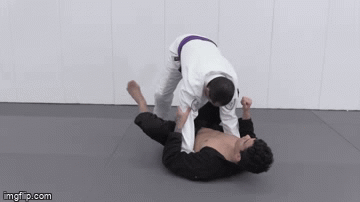
Armbars. You either love them or hate them depending on where you are in the exchange. One thing is for sure. You’ll both get a tap with one, and tap to one during your time training Jiu-Jitsu. Needless to say, armbars work from anywhere: guard, mount, side control, turtle, you name it. Moreover, you have plenty to choose from in bent, straight, inverted, etc. armlocks. But what’s the highest percentage, fastest armbar you can get with minimal movement? That would be an armbar from guard. And it comes in several different variations.
The armbar from guard is a classic Brazilian Jiu-Jitsu submission. It is one of the first you learn and one you stick with until the end. However, if you look at the rate of the “standard” armbar from guard, you might notice that they’re nowhere near as impressive as you might think. This is down to the approach we have to the basic guard armbar, as well as the way we learn it. There are just too many steps in which an opponent can counter or escape. So, why not shorten them and go for a quick and easy armbar from guard variation? On that note, why not have several instead of just one quick option? Let’s find some answers.
The Issue WIth Setting Up Armbars From Guard
The armbar from guard is a reliable and easy to learn technique. Well, okay, it may not be that easy, but it does work. That being said, there’s a flaw in the armbar from guard that we know and love to do. Actually, the submission itself is perfect. It is the process of getting to the submission that we approach in a more difficult manner than we should.
Think about a basic closed guard armbar. You start of ina a closed guard and you need to get an opponent’s arm as high as possible across your torso. That right there is a first warning sign for them to pull their arm back. Next, you try and wedge it all in place with grips and a posture break. Second warning sign. Step Three is usually opening your guard and placing your feet on their hips. You then rotate to change the angle and finally, you swing the leg over the head for the final position. Submitting is step number six in this sequence.
Sequences like this, with multiple steps, rarely do seem to work in BJJ. The armbar from the bottom is ultra-effective, but getting there needs to be done in as few steps as possible, preferably one or two. The less time your opponent has to realize what is going on, the better. That’s one way of improving your armbar submission rate. The other is to include armbar variations and finish with minimal movement and only a few steps once again.
Armbar From Guard – Quick Submission Options
First up, let’s see how we can shorten the 5-6 step sequence to a 2-step one. First up, you have to be sure the elbow of the opponent is in front of your thigh. If that is the case, simply grip their sleeve wherever it is. The goal is to keep the arm from retracting. To start the armbar, the first motion is angling your head to the opposite side of the arm you’re attacking. The second step is throwing your legs up, biting down on the opponent’s shoulder. That’s a quick and efficient tap right there, with them being none the wiser.
A real favorite of mine is the quick armbar from the guard using an overhook. This tight armlock works when you manage to overhook one arm. You can get there in whichever manner you find suits you the most. After you overhook, though, go for the collar grip with the overhook arm. That’ll give you an anchor. Finishing requires you to open your guard, angle sideways, and use your knee to press on the opponent’s elbow. Painful, quick, and with no way out.

Interesting options also include crazier stuff, like double armlocks from the closed guard or variations. Check Eddie Bravo’s new Ultimate Rubber Guard DVD for the Dead Orchard double armbar.
The Marcelo Garcia Inverted Armbar
Marcelo Garcia’s inverted armbar is also one of the quick armbar from guard options you should have up your sleeve. Marcelo was so proficient with it, that he tapped out high-level opponents at will, something nobody has been able to reproduce since.

Final Words
Quick armbars are effective. They require lots of details, true. However, they take fewer steps to set up, giving them a distinct advantage. Let me put things into a different perspective here – the nature of quick armbars means you open up way more attacks, including the standard armbar, when you try to get on of them. On the other hand, they have such a huge percentage of success, that you won’t need to follow up. Simply put, the less you complicate armbars the more armbar from guard taps you’ll get.








































